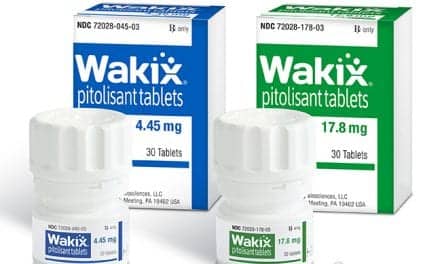The US Food and Drug Administration (FDA) granted Breakthrough Therapy Designation to Takeda Pharmaceutical Company Ltd’s TAK-994,1 its Phase 2 investigational oral orexin agonist, which is designed to selectively target orexin 2 receptors. TAK-994 is currently being studied for the treatment of excessive daytime sleepiness in patients with narcolepsy type 1 (NT1).
The FDA’s Breakthrough Therapy designation process is designed to expedite the development and review of a drug that is intended to treat a serious condition, for which preliminary clinical evidence exists indicating it may demonstrate a substantial improvement over available therapies on at least one clinically significant endpoint.
The TAK-994 BTD was based, in part, on early phase and preliminary clinical data that indicates Takeda’s investigational oral orexin agonist may demonstrate substantially improved objective and subjective measurements of daytime wakefulness in NT1 patients. Currently, TAK-994 is being studied in an ongoing Phase 2 (TAK-994-1501) study. Data from the completed Phase 2 study will be presented at a future scientific conference after the study’s conclusion.
“Individuals with narcolepsy type 1 suffer from excessive daytime sleepiness, which might mean routinely falling asleep at work or in school. If approved, investigational TAK-994 has the potential to transform the way we currently treat NT1 by addressing the underlying orexin deficiency central to the disease,” says Sarah Sheikh, head, neuroscience therapeutic area unit at Takeda, in a release. “Orexin plays a critical role in regulating a person’s sleep wake cycle, and supports the body’s natural wake promoting pathways in the brain.”
Investigational TAK-994, which was discovered at Takeda’s laboratories in Shonan, Japan, part of the open innovation center at the Shonan Health Innovation Park, is the lead candidate in Takeda’s multi-asset orexin-focused franchise. This designation marks a key milestone in Takeda’s accelerated development efforts to bring this important potential therapy to patients with narcolepsy type 1.



